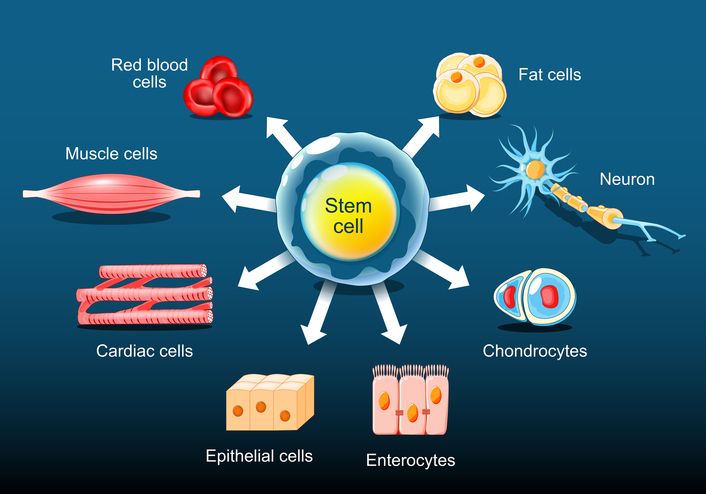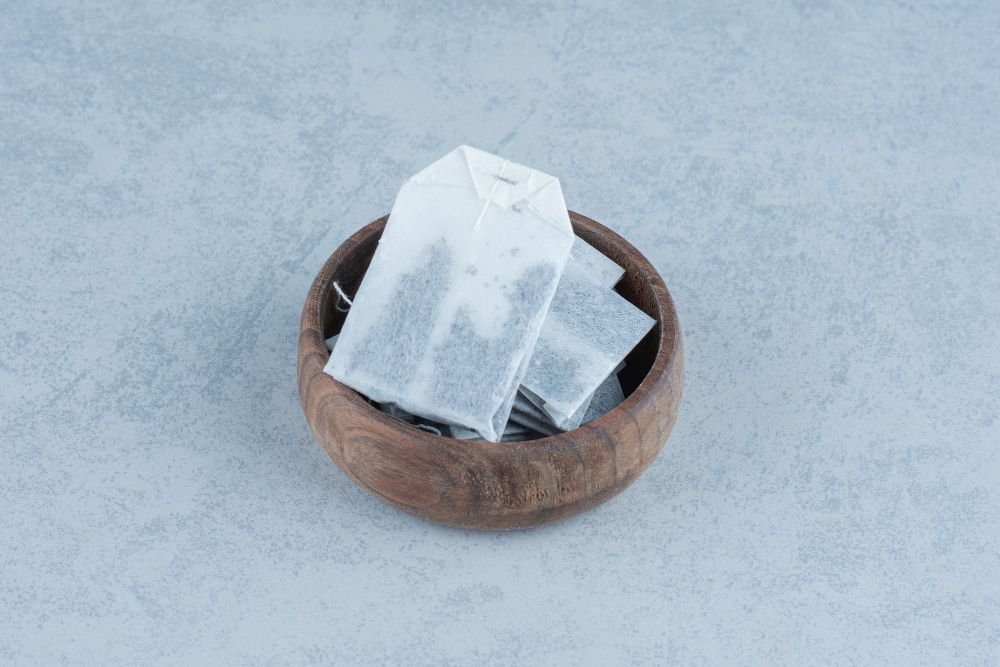
Book Now to Experience
Acne Treatment
1 Minute Self-Registration
Date should not be before minimal date
Author: Leila Tan|Updated: 23 July 2024
Hyperpigmentation scars can be stubborn and removing them can be quite challenging. Having the right information and being consistent with the treatment can show some visible changes.

1
What is hyperpigmentation

The term "hyperpigmentation" in medicine refers to darker regions of skin caused by an excessive amount of melanin synthesis.Patches of skin become darker than they otherwise may be as a result of this. Hyperpigmentation can be brought on by sun exposure, certain medical diseases, responses, and physical trauma to the skin, among other things. Everything from sun damage and hormone changes to various types of acne and scars might contribute to this.
Post-inflammatory hyperpigmentation typically fades away on its own, unlike severe acne scarring. But, recovery may take a while. But sometimes the color changes continue much longer, most patients see a noticeable improvement in their condition between three to 24 months.

2
Hyperpigmentation scars
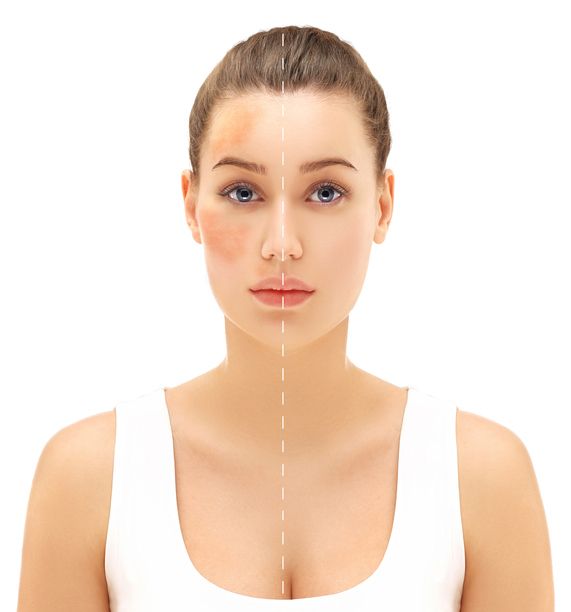
Scarring that is more darkly pigmented than the surrounding skin is referred to as hyperpigmented scarring. The overproduction of melanin is what causes this discolouration. The general term "melanin" refers to melanin production, a set of organic pigments that give our skin its tone. More melanin is present in the skin the darker the skin tone. Hyperpigmentation can appear as anything from a huge birthmark to a giant freckle, and it can impact both minor and larger portions of the body.
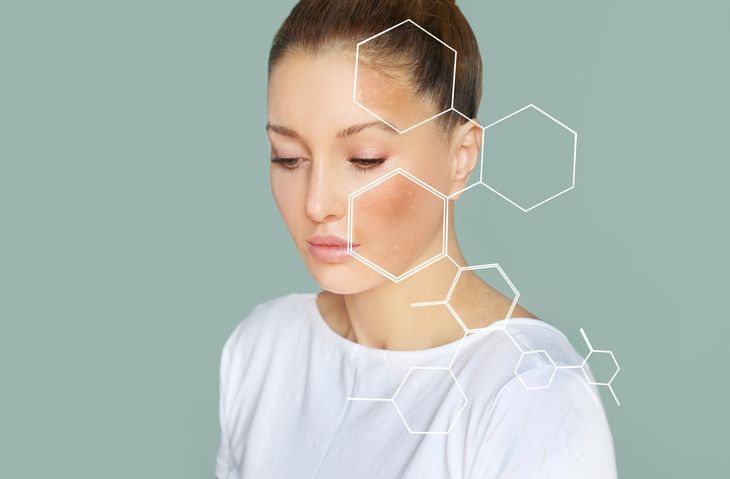
Smaller, more angular scars that point downward into the skin's surface are known as ice pick scars. The cheeks frequently have these scars. Ice pick scars are notoriously difficult to cure and frequently need intensive, persistent care.
There are numerous causes of hyperpigmentation, ranging from illnesses and disorders to everyday lifestyle decisions. It is simpler to choose the most effective treatment strategy if you are aware of what is causing the hyperpigmentation. Hyperpigmentation is generally not harmful, but it might be a sign of other, more serious conditions. To rule out anything dangerous, like melanoma, any newly hyperpigmented marks or spots should be reviewed with your doctor or dermatologist. The majority of hyperpigmentation-related damage can be treated and repaired.
Read More

3
How to get rid of post-inflammatory hyperpigmentation
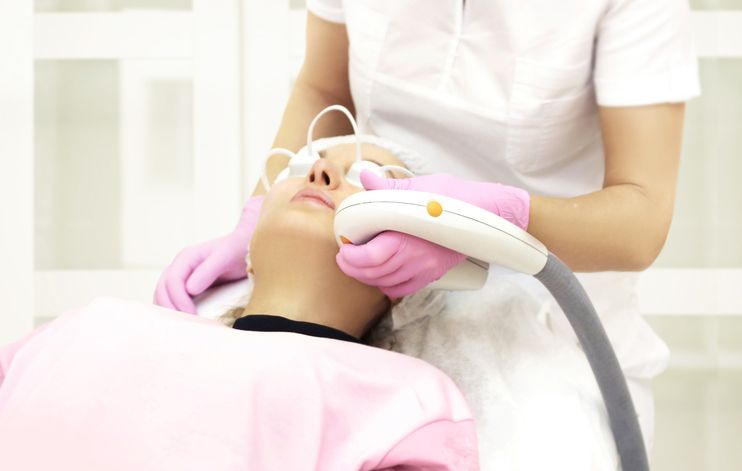
A type of skin hyperpigmentation known as post-inflammatory hyperpigmentation, or PIH for short, is mostly brought on by how the skin regenerates after inflammation. It might appear as flat regions of hypercoloration and can affect the face and body, usually in areas that have been exposed to UV rays.
Post-inflammatory hyperpigmentation can affect people of both sexes and skin tones, while it is more common in those with darker skin tones.

4
Causes of hyperpigmentation
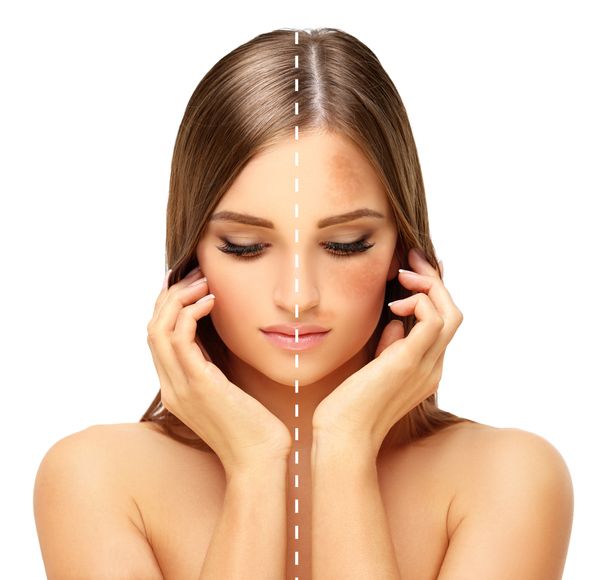
Sun spots are a common name for one of the most prevalent types of hyperpigmentation. Little to medium-sized skin lesions brought on by solar damage to skin cells typically appear on the hands, face. As skin is exposed to sunlight, more melanin is produced, which results in the change in color. Most organisms have a category of natural pigments known as melanin. Each person has a different quantity of melanin depending on their genetics and skin type.
Melasma or chloasma is a specific type of hyperpigmentation that is primarily brought on by hormonal factors. It's thought to happen when the female sex hormones estrogen and progesterone stimulate the overproduction of melanin when skin is exposed to sunlight. It's especially prevalent in women. A side effect of some hormone therapies is hyperpigmentation.
There is a condition known as melasma that is another typical cause of hyperpigmentation. A particular type of hyperpigmentation called melasma develops during pregnancy more often than not as a result of hormonal changes. The production of melanin can fluctuate as a result of additional hormonal conditions such as Addison's illness. Freckles are regarded as a type of hyperpigmentation.
Hyperpigmentation is a side effect of some medications. Hyperpigmentation can also result from skin damage, excessive amounts of stress, and other factors.
Inflammation can be brought on by skin injuries, such as acne, eczema, bug bites, wounds, and scrapes, as well as by scratching or friction from, say, vigorous rubbing. In turn, inflammation can activate cells that produce pigment, leaving a dark area behind even after the damage has healed. Post-inflammatory hyperpigmentation is a common term used to describe discoloration that is brought on by inflammation.
The number of melanin-producing cells, or melanocytes, declines with age, but those that remain become larger and are more evenly distributed across the skin. The progression of age spots in people over 40 is explained by these physiological changes. In skin aging, you may read more about skin aging.

Book Now to Experience
Acne Treatment
1 Minute Self-Registration
Date should not be before minimal date

5
Treatment for hyperpigmentation
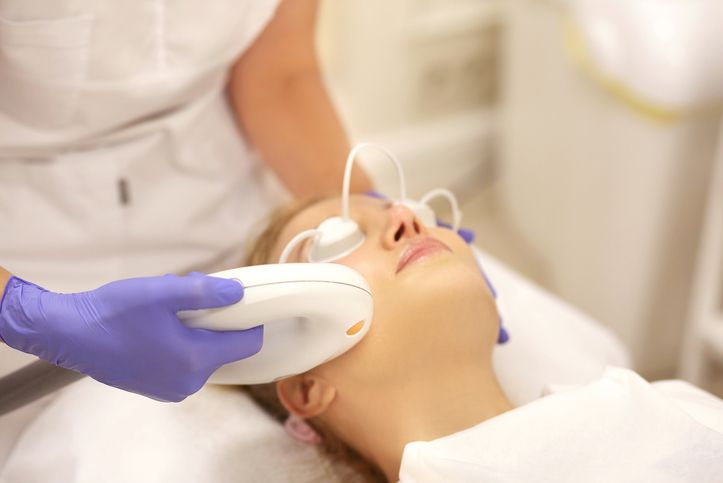
Hyperpigmentation needs to be treated gradually. For instance, if Addison's disease or pregnancy is the source of the hyperpigmentation, you should talk to your doctor about how to manage your hormones and anything else that might be causing the increase in your melanin levels. You can treat the dark patches with any skin-lightening product your doctor recommends once the reason has been identified. Be sure the lotion you purchase doesn't include any toxic components, like bleach.
Chemical peels, microdermabrasion, and the use of potent skin creams containing hydroquinone, alpha hydroxy acids, or glucocorticoids are more intrusive therapies. An overview of each type of treatment options
Chemical peels:
Chemical peel peels, particularly those used to treat age spots, sun spots, and acne scarring, can help hyperpigmentation problems seem better. The outermost layers of skin are exfoliated with a combination of acids during this operation. It can be applied to the hands, chest, neck, and face.
Azelaic acid:
Free radicals that cause inflammation can be prevented or neutralized by azelaic acid. It significantly reduces redness and has relaxing effects on the skin. skin tone balances. By blocking the tyrosinase enzyme, which causes hyperpigmentation, or dark spots of an uneven skin tone, it lessens pigmentation.
Microdermabrasion:
Microdermabrasion is a non-ablative, non-chemical process that doesn't damage skin or scar tissue and doesn't need much time to heal.
Laser peel:
Targeted light beams are used during a laser peel (resurfacing) procedure to lessen hyperpigmentation. Ablative and non-ablative lasers are both available.
The most intense laser treatments remove layers of your skin and are called ablative lasers. On the other hand, non-ablative therapies focus on the dermis to encourage collagen formation and tightening benefits.
Skin bleaching agents:
Skin bleaching agents include creams with a hydroquinone base. An excellent product for minimizing the appearance of skin discoloration is hydroquinone. It comes in both prescription and over-the-counter strengths.
Intense pulse light therapy (IPL):
Non-ablative (fractional) laser therapy includes IPL therapy. IPL therapy, also referred to as a photofacial, promotes collagen development in the dermis. Usually, several sessions are necessary.
IPL is used to treat general pigmentation problems, although flat areas respond particularly well to this therapy. Also, it can aid in lessening the visibility of wrinkles, spider veins, and enlarged pores.
Alpha hydroxy acids:
A class of acids called alpha hydroxy acids can be present in food. Alpha hydroxy acids of different types are added to creams or lotions before being applied to the skin. They improve skin hydration and speed up cell renewal.
Be mindful that any scars, including those from wounds, burns, surgeries, rolling scars, or acne, are extremely susceptible to hyperpigmentation if exposed to sunlight. The scar's deepening may be there forever.
As mentioned, hyperpigmentation is typically not dangerous. But, it might also be a sign of a more serious medical issue, therefore it's important to always be vigilant while exposed to the sun. Daily use of SPF and routine dermatologist appointments (often once a year) are essential to prevent the development of hyperpigmentation.

6
Home treatments
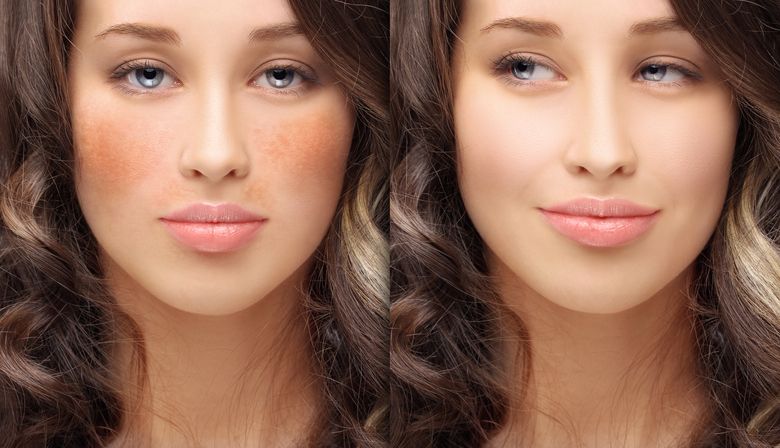
Natural methods may also be used to treat acne, lessen scars and lighten hyperpigmented areas. Nevertheless, no extensive human trials have been done to determine whether any of these treatments are truly successful.
Aloe Vera
Hyperpigmentation may get lighter thanks to aloesin, a substance found in aloe vera. Aloesin acts by preventing the skin's melanin from being produced.
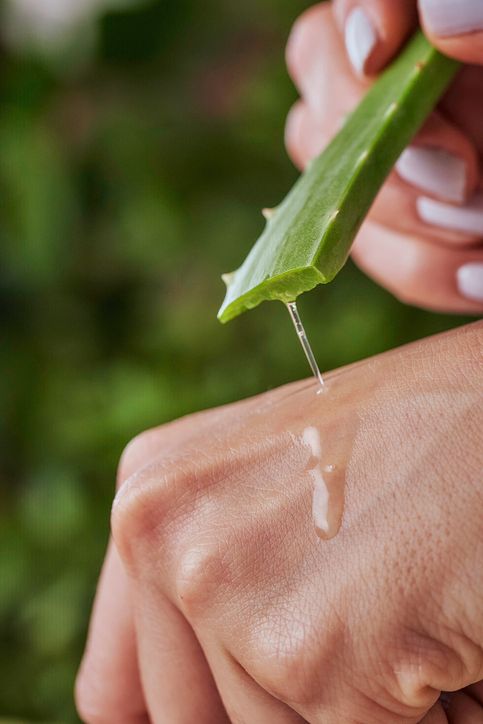
Daily skin applications of aloe vera gel from the plant are possible. Unfortunately, no studies have explicitly connected aloe vera to fewer hyperpigmented spots, so experts are unsure of how beneficial this method is at the moment.
Green Tea
Hyperpigmentation may be improved by green tea extracts. Green tea has long been researched for its possible anti-inflammatory and antioxidant effects.
Green tea extracts may be able to lessen sunburn and improve melasma, according to a small body of study. Before scientists can fully comprehend whether or whether green tea helps improve symptoms, more research is required.
Turmeric
You may produce a turmeric face mask to apply on your skin. You can make the face mask by combining tiny amounts of Greek yogurt, honey, and turmeric. The mask can be worn for 15 minutes before being removed with water.
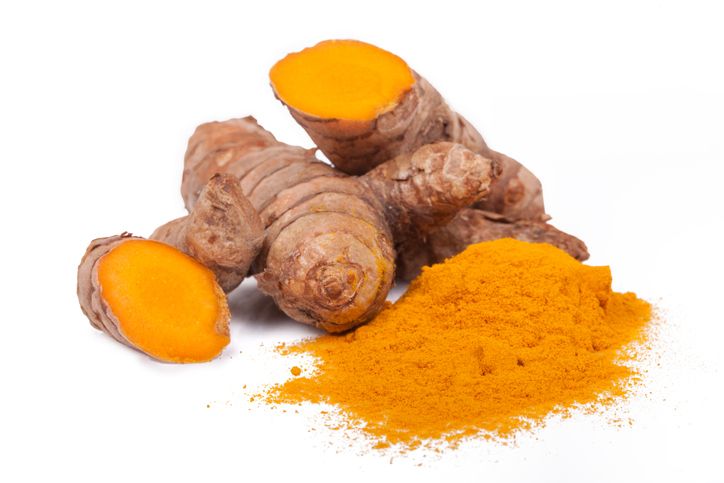
This mask can help to removing dead skin cells, which can aid in reducing hyperpigmentation and promoting the growth of new skin cells, thereby enhancing the tone and texture of scars.
Grape seed oil
Vitamin E and vitamin C, two powerful antioxidants, are abundant in the oil made from grape seeds. Antioxidant advantages are helpful in treating hyperpigmentation. 8 You can use grape seed oil if you.

Before going to bed, use pure grape seed oil as a serum on your face.
To reap the advantages, incorporate a few drops of seed oil into your moisturizer or cream.
Combine lavender essential oil with grape seed oil. Only a few drops of essential oil should be combined with grape seed oil.

7
What works best for each skin tone?
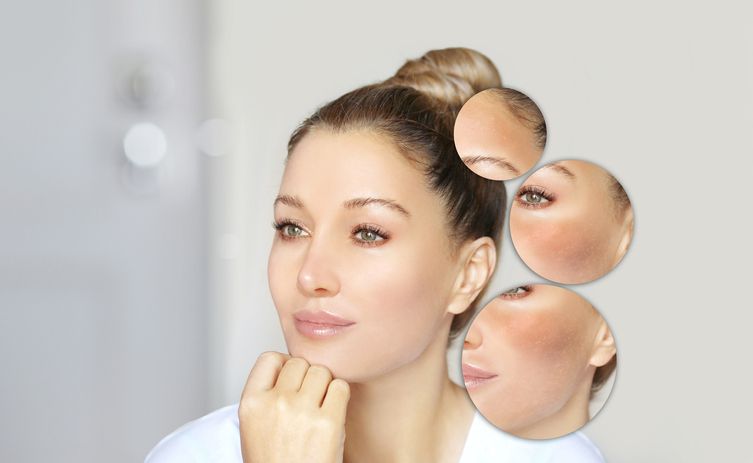
The extent and duration of hyperpigmentation treatments might depend on the skin tone. Those with fair, medium, and dark skin tones can employ some of the same therapies, but those with darker skin tones require longer treatment times, claims Healthline.
If you easily tan or have darker skin, you may be prohibited from doing the following:
- high-beam lasers - IPL therapy
The following choices may be useful for people with medium skin tones:
- chemical peels - microdermabrasion
Those with darker complexion may gain from:
- glycolic acid - kojic acid - OTC lightening creams - microdermabrasion - lower-strength chemical peels - laser treatments

8
Prevent future damage
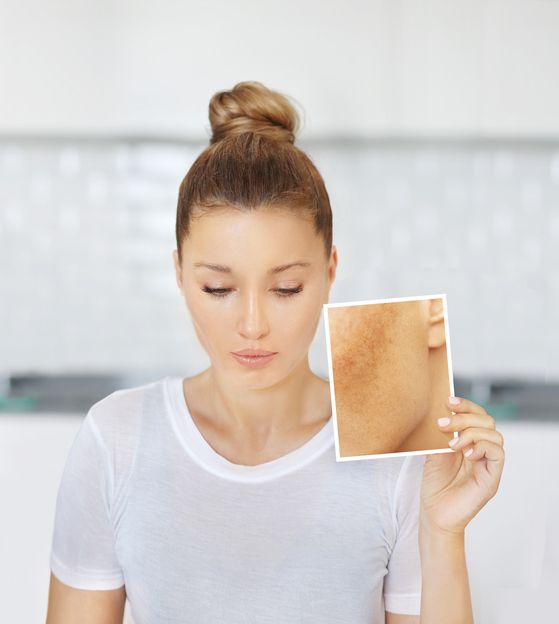
You can take additional preventive steps to reduce the onset of future dark spots in addition to therapy and sun protection. Avoid irritated or burning skin care products because these might exacerbate or even start hyperpigmentation. Also, guard against additional typical skin-darkening factors by utilizing acne medicine to treat zits and bug spray to ward against bites.

Book Now to Experience
Acne Treatment
1 Minute Self-Registration
Date should not be before minimal date

9
Consult a dermatologist

Your dermatologist can assist you in determining the origin of your hyperpigmentation and will collaborate with you to create an effective treatment regimen.
No matter what course of action you finally take, it's critical to safeguard your skin from additional UV damage and hyperpigmentation.
Sunscreen should always be worn. Even on cloudy days, you should still apply sunscreen in the morning and reapply as necessary during the day. Use sunscreen that has an SPF of 30 or higher.

10
Conclusion

The skin occasionally produces too much melanin, leaving black spots or patches that stand out from the surrounding skin. While being a common skin problem, hyperpigmentation can make one feel self-conscious. Hyperpigmentation can have both internal and extrinsic causes.
To manage hyperpigmentation, please take the appropriate treatment options and stay consistent with it. If the condition persists it is recommended to consult a doctor for further medications.
FAQ
How can I get rid of my current pigment spots?
Even though prevention is always better, there are things you can do after pigment spots have appeared to help them disappear and stop them from coming back.
How are problems of pigmentation identified?
An accurate medical history, physical examination, skin inspection, biopsy, and blood tests to examine thyroid, vitamin, iron, and hormone function are used by doctors to detect pigmentation disorders.
What medical alternatives are there for treating hyperpigmentation?
Cryotherapy, chemical peels, laser skin resurfacing, pigmented lesion laser, and cryotherapy are other treatments for hyperpigmentation.

Book Now to Experience
Acne Treatment
1 Minute Self-Registration
Date should not be before minimal date
Recommended Articles
COPYRIGHT© NEW BEAUTY MANAGEMENT LIMITED 2025. ALL RIGHT RESERVED.


